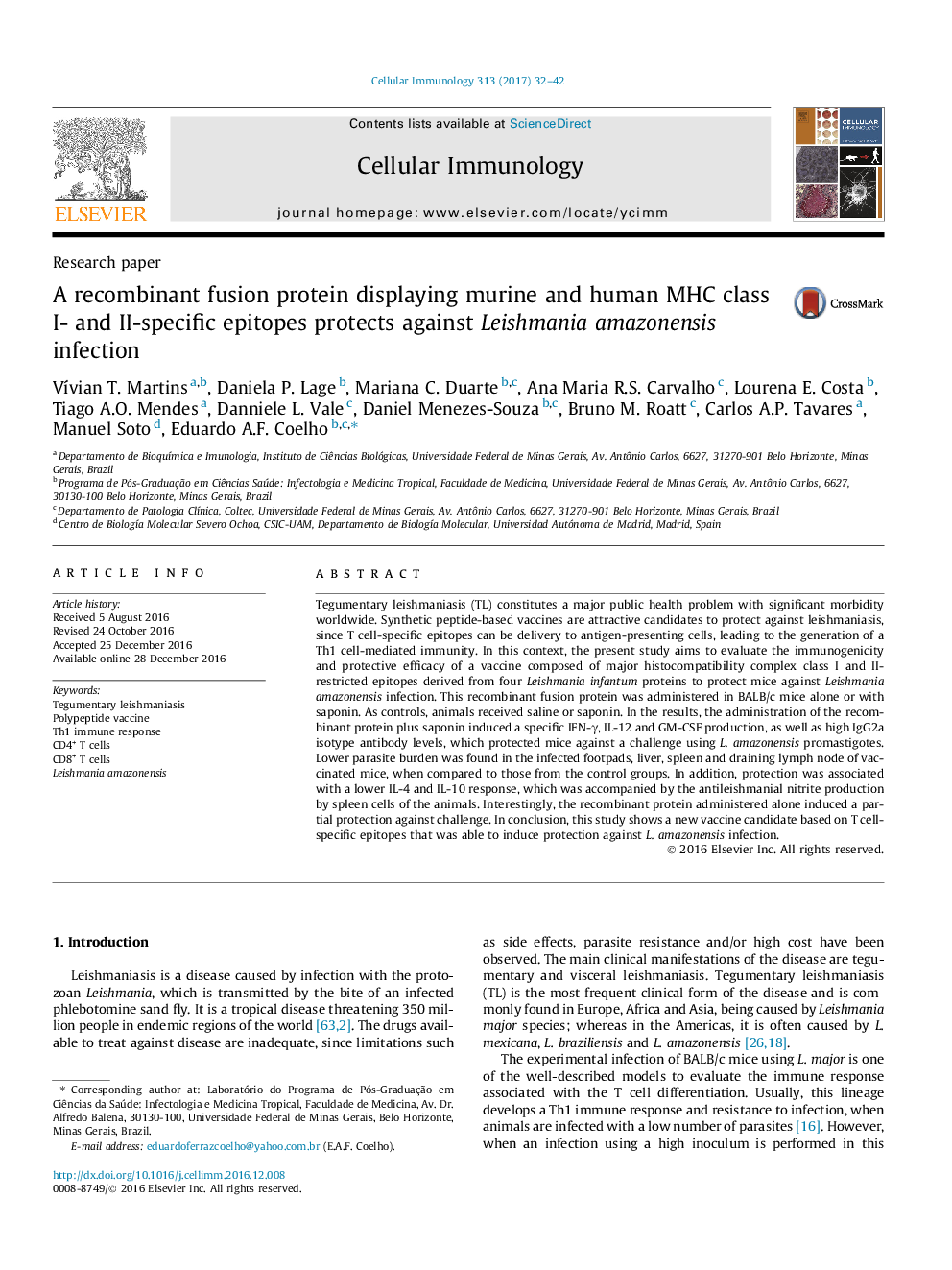| Article ID | Journal | Published Year | Pages | File Type |
|---|---|---|---|---|
| 5530762 | Cellular Immunology | 2017 | 11 Pages |
â¢A recombinant chimeric protein was developed.â¢It was composed by T cell epitopes specific to human and mice haplotypes.â¢The immunogenicity of this new protein plus saponin was evaluated in BALB/c mice.â¢Vaccinated animals and challenged with L. amazonensis were protected against infection.â¢This new polypeptide-based chimera could be tested in future studies in other mammalian hosts.
Tegumentary leishmaniasis (TL) constitutes a major public health problem with significant morbidity worldwide. Synthetic peptide-based vaccines are attractive candidates to protect against leishmaniasis, since T cell-specific epitopes can be delivery to antigen-presenting cells, leading to the generation of a Th1 cell-mediated immunity. In this context, the present study aims to evaluate the immunogenicity and protective efficacy of a vaccine composed of major histocompatibility complex class I and II-restricted epitopes derived from four Leishmania infantum proteins to protect mice against Leishmania amazonensis infection. This recombinant fusion protein was administered in BALB/c mice alone or with saponin. As controls, animals received saline or saponin. In the results, the administration of the recombinant protein plus saponin induced a specific IFN-γ, IL-12 and GM-CSF production, as well as high IgG2a isotype antibody levels, which protected mice against a challenge using L. amazonensis promastigotes. Lower parasite burden was found in the infected footpads, liver, spleen and draining lymph node of vaccinated mice, when compared to those from the control groups. In addition, protection was associated with a lower IL-4 and IL-10 response, which was accompanied by the antileishmanial nitrite production by spleen cells of the animals. Interestingly, the recombinant protein administered alone induced a partial protection against challenge. In conclusion, this study shows a new vaccine candidate based on T cell-specific epitopes that was able to induce protection against L. amazonensis infection.
Graphical abstractDownload high-res image (139KB)Download full-size image
